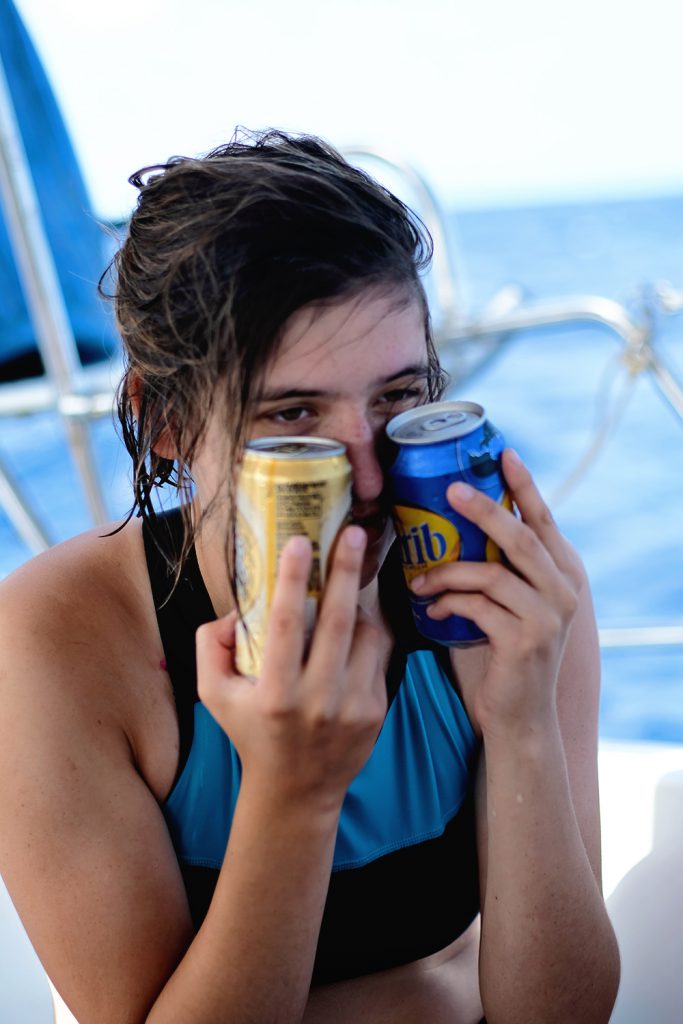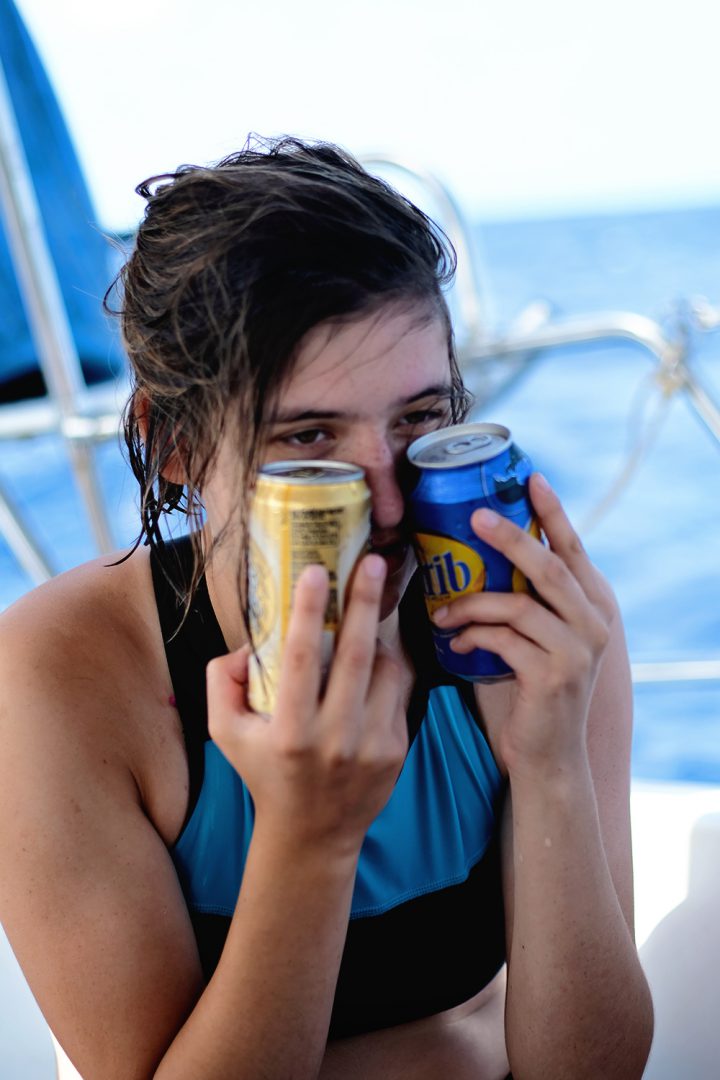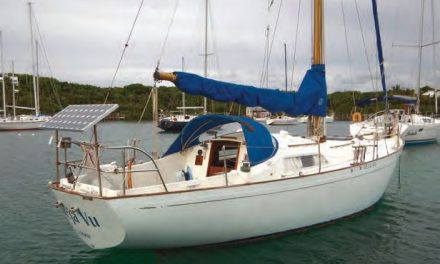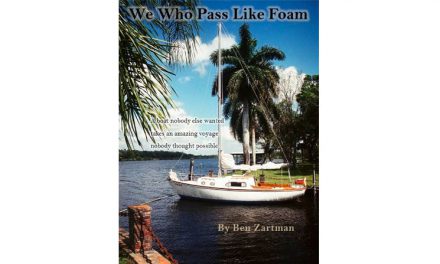 I was still green, having only a month ago traded my Great Lakes home in Michigan for the salty sea air and hot sun of the Caribbean. Now, here I was, crewing with a bunch of strangers aboard Windy and everything about sailing was new to me. And I had no complaints. Sunlight glinted on the tops of deep-blue waves while flashes of silver and a flutter of wings raced by the hull, a school of flying fish joining us on our 6-hour voyage.
I was still green, having only a month ago traded my Great Lakes home in Michigan for the salty sea air and hot sun of the Caribbean. Now, here I was, crewing with a bunch of strangers aboard Windy and everything about sailing was new to me. And I had no complaints. Sunlight glinted on the tops of deep-blue waves while flashes of silver and a flutter of wings raced by the hull, a school of flying fish joining us on our 6-hour voyage.
Then we heaved to and the captain’s voice rang out from astern, “Hop in!” It was time for a quick cool-off swim.
I stood at the bow. The beautiful Caribbean Sea called out to me, and all I had to do was jump. I took a breath and leapt.
That first splash was bliss, the sunburn on my face and shoulders cooling to the saltwater’s touch. I paused to take in the peacefulness of being underwater. Then, feeling invigorated, I swam hard for the surface.
The bridge of my nose slammed into Windy’s hull. Pain erupted from behind my eyes and deep within my skull. I was dazed, confused — How did that get there? What was I doing underwater? — but I knew I had to move, to maneuver away from the boat and to get air.
Popping up alongside the hull, I gasped for air. And I couldn’t swim, my brain wasn’t working right. I could see the boat — two other crew on the bow, endless ocean and a white, brilliant sun and blue sky, but I couldn’t process it all, I couldn’t comprehend anything. Thinking back, it was the same feeling as reading a book and then realizing I’d not paid attention to anything on the past several pages and having to go back.
The crew was laughing. I could hear them wondering where I’d gone and why I’d swam under the boat. Later, they told me I looked normal then, maybe a bit confused.
“I need help,” I managed. The boat was drifting away. I knew I had to swim, but my body didn’t respond. I was just floating, my hands and legs still. My breathing was shallow. Help me, I remember thinking, I’m gonna drown.
One of the crew, May, dove in and swam towards me, asking me questions. I couldn’t respond. She wrapped an arm around my waist and started pulling me towards Windy. I heard the boat’s engine start and it moved closer. At the boarding ladder, I somehow pulled myself aboard and then plopped down on a seat, exhausted and dazed.
It took a couple cans of very cold beer on my very swollen face and some friendly chatter to bring me back to my senses. Then we started going over what went wrong.
I didn’t know about the currents, about how the boat was still moving slowly forward while hove to. I didn’t jump far enough from the boat, and not in the right direction. I started to think “what if?” What if I had blacked out and not surfaced? What if May hadn’t seen me or jumped in on time? What if I didn’t float and just sank?
I’d heard the captain earlier go on about the dangers of the ocean. Just a few days prior, another sailor had shared words of wisdom in the context of recounting experiences aboard in life-threatening storms: “She can turn on you in just a minute, one mistake can cost you your life.” I remember wondering whether I’d ever see and experience that kind of fury, but I missed the important message: even a placid situation at sea can quickly and out of the blue become dangerous. My experience helped me to understand this truth.
I will always treat the water and the boat with respect. I will maintain an awareness. Because I know, first-hand, that the sea is just as deadly as she is magnificent.





